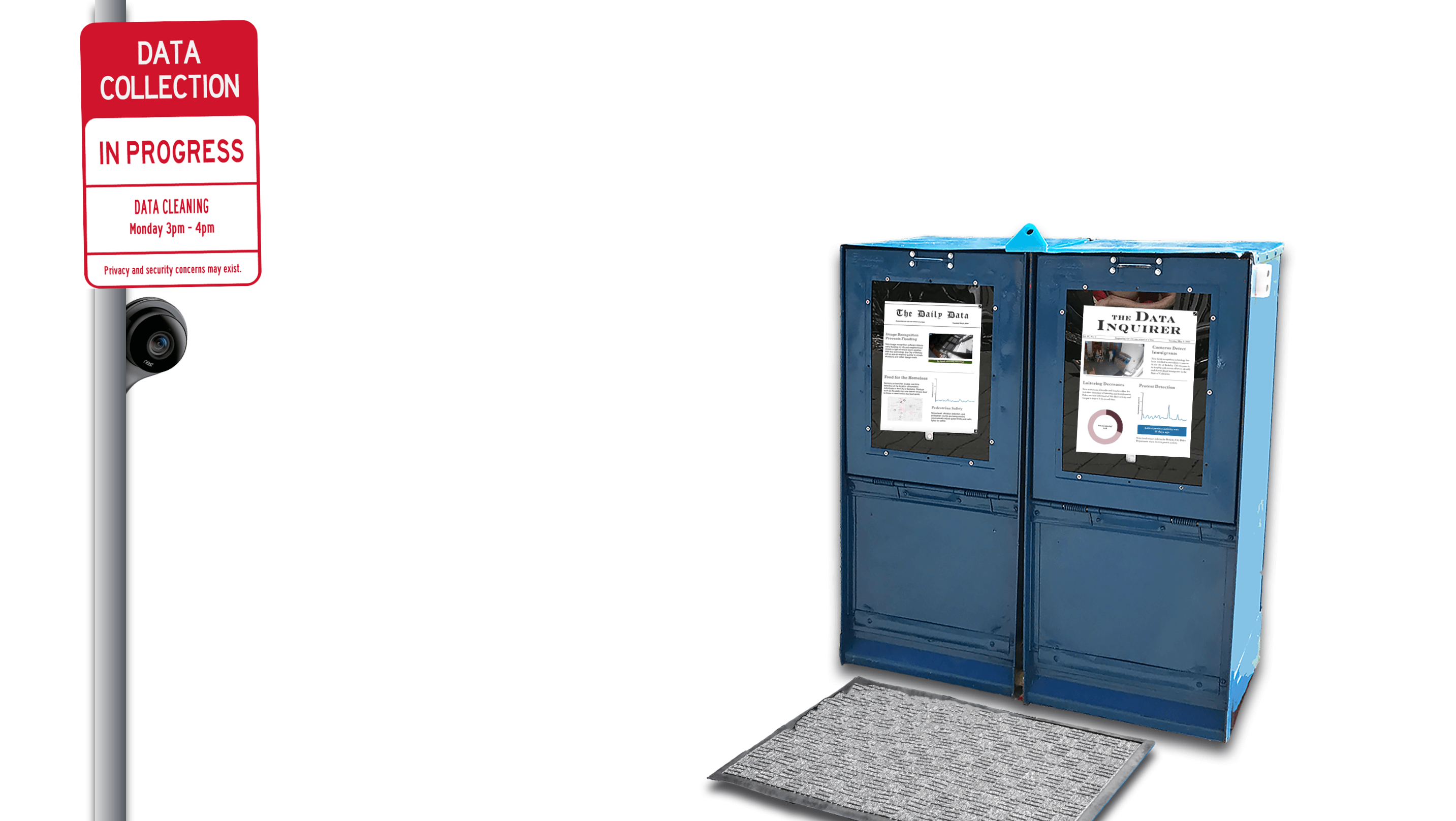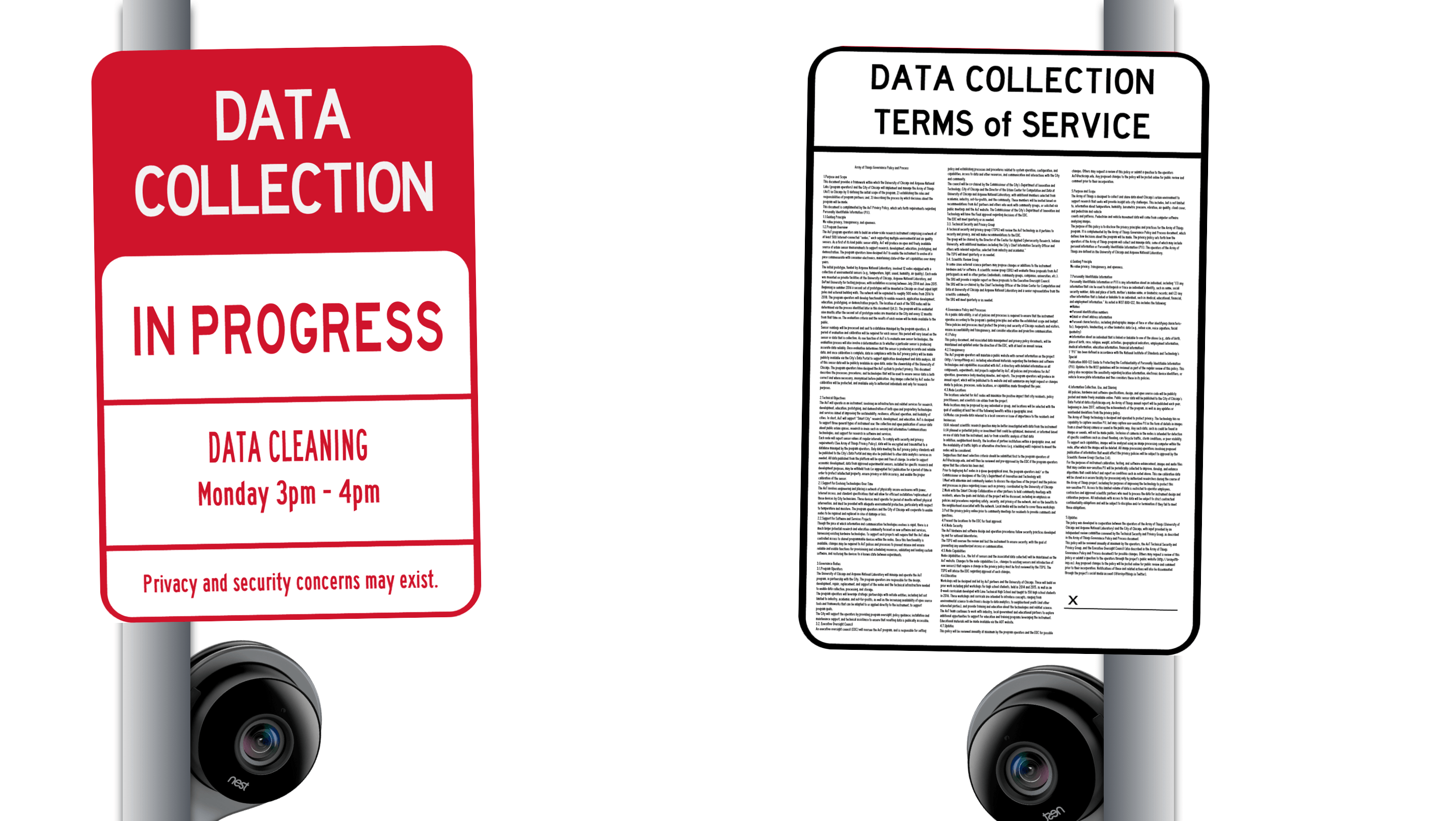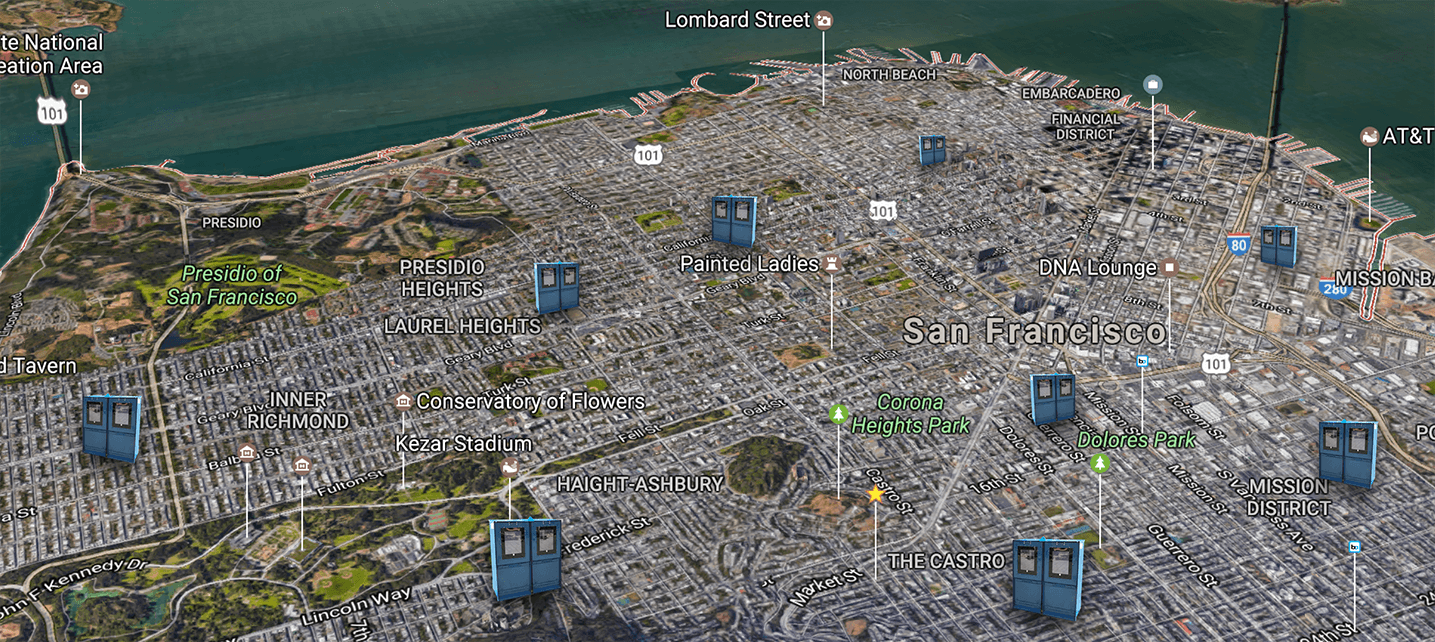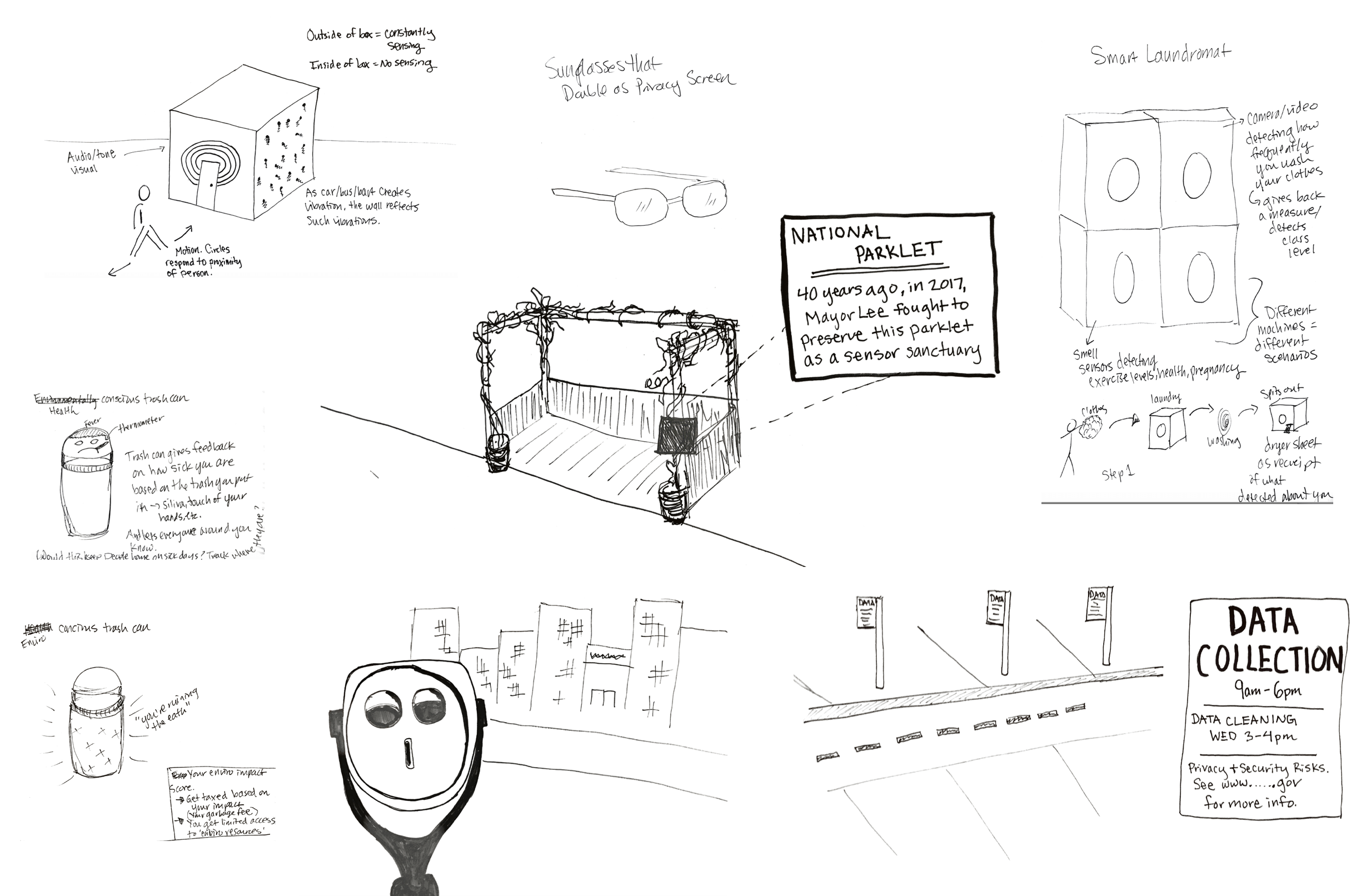critical design • interaction design • d3.js • RaspberryPi • making
The Problem
Smart city initiatives are underway worldwide, from Chicago to Singapore to London to Oakland. For example, Chicago recently implemented the Array of Things, a series of sensors, cameras, and microphones placed all over the city to detect the environment and the people. These sensors promise to improve pedestrian safety and gain environmental efficiencies.
But, with these benefits, come potential harms including privacy and security vulnerabilities at the community or national level, and the potential to exacerbate widening socio-economic disparity.
Smart cities impact everyone - the homeless, children, locals, and tourists. Many of whom can’t opt out of having data collected on them. The conversations about the potential harms of smart cities are occuring in privacy documents online filled with legal jargon or in town hall meetings. But, the topics discussed can be nebulous, abstract and complex, limiting who can partake in these conversations.
The Solution
We built an interactive, physical installation to surface the benefits and harms of smart cities and start conversations amongst the general public on the street.
For the installation, we re-purposed newspaper boxes and parking signs:

The sign has two sides - one informing the public that data collection is in progress - the other, a terms of service that is intentionally too small to read.

The boxes are outfitted with sensors detecting real-time noise level, the presence of people with force and proximity sensors, and video cameras. One newspaper (The Daily Data) uses the sensor data for public good purposes. The other newspaper, The Data Inquirer, uses the same data for surveillance.

The newspaper boxes also have speakers in them inviting in, directing, or questioning passerbys on the street. Here is one experience of someone interacting with the newspaper boxes:
We imagine these newspaper boxes existing in neighborhoods across an entire city, bringing hyper-local data stories to different communities.
How might such interactive installations change the way you think about privacy and public data collection at scale?

Grants and Awards
Center for Long-Term Cybersecurity Fellow, UC Berkeley
Arts Research Center Fellow, UC Berkeley
Dr. James R. Chen Award, UC Berkeley School of Information
Design Overview
The design and research process was fueled by a survey to 530 people across the US on privacy attitudes, 6 expert interviews, innumerable sketches, feedback from San Francisco and Oakland civic artists, and running a design focus group with a low-fidelity prototype.
Sketching
I would sketch in various notebooks, on whiteboards, while sitting on street corners observing people, at museums, and in my dreams. I'd find tech-art projects online and slightly alter them for smart cities.
I ran a design exercise with 30 students, exposing one third of them to a passive art piece, another third to an interactive art piece, and the last third to a participative art piece all on the same topic to see how their take-aways differed.
With teammates, we created a design matrix randomly combining a sensor with a piece of city infrastructure. For example, what could you do with a laundromat that detects smell?
We also did a lot of infinity diagramming of what we were trying to get across with our design:
One day, dry of ideas, I laser cut a box to hold my 'canvas' (i.e. sticky notes) and design constraints as a playful way have more fun with the process:
Here are just some of the sketches that emerged:

(Sketches by me)
Struggling with narrowing on one idea, I took these sketches to Ben Davis and Vanessa Inn from Illuminate SF who worked on the Embarcadero Bay Bridge Lights and Lightrail BART Lights projects in San Francisco, Matt Passmore who founded parklets with Park(ing) Day, and Darryl Smith who started the Tenderloin National Forest. A theme that came from these artists was the canvas of a newspaper box just begging to be re-purposed.
So, off we went with newspaper boxes!
Design focus group
We made a low fidelity cardboard prototype of a newspaper box out of carboard that we used to run a design focus group. The group was comprised of 12 participants across various UC Berkeley departments from landscape architecture to film to journalism. A key takeaway was thinking about how our design can take advantage of the act of taking content from the box. We flipped this by asking participants to give the box feedback, similar to a digital comments section.
Prototyping and fabrication
We then built a high-fidelity prototype using real, metal newspaper boxes. Here's a short video of us building them:
Piloting and studies
We piloted our prototype with three students and made modifications based on their feedback. We then proceeded to conduct three study days, observing and interviewing approximately 40 people interacting with the boxes.
Full Report
Here are our presentation slides with more on our design process and research findings. And, my github with RaspberryPi, flask app, and d3.js code.
Project team member: Sasha Volkov
Advisors: Mitchell Karchemsky, Chris Myers, and Kimiko Ryokai